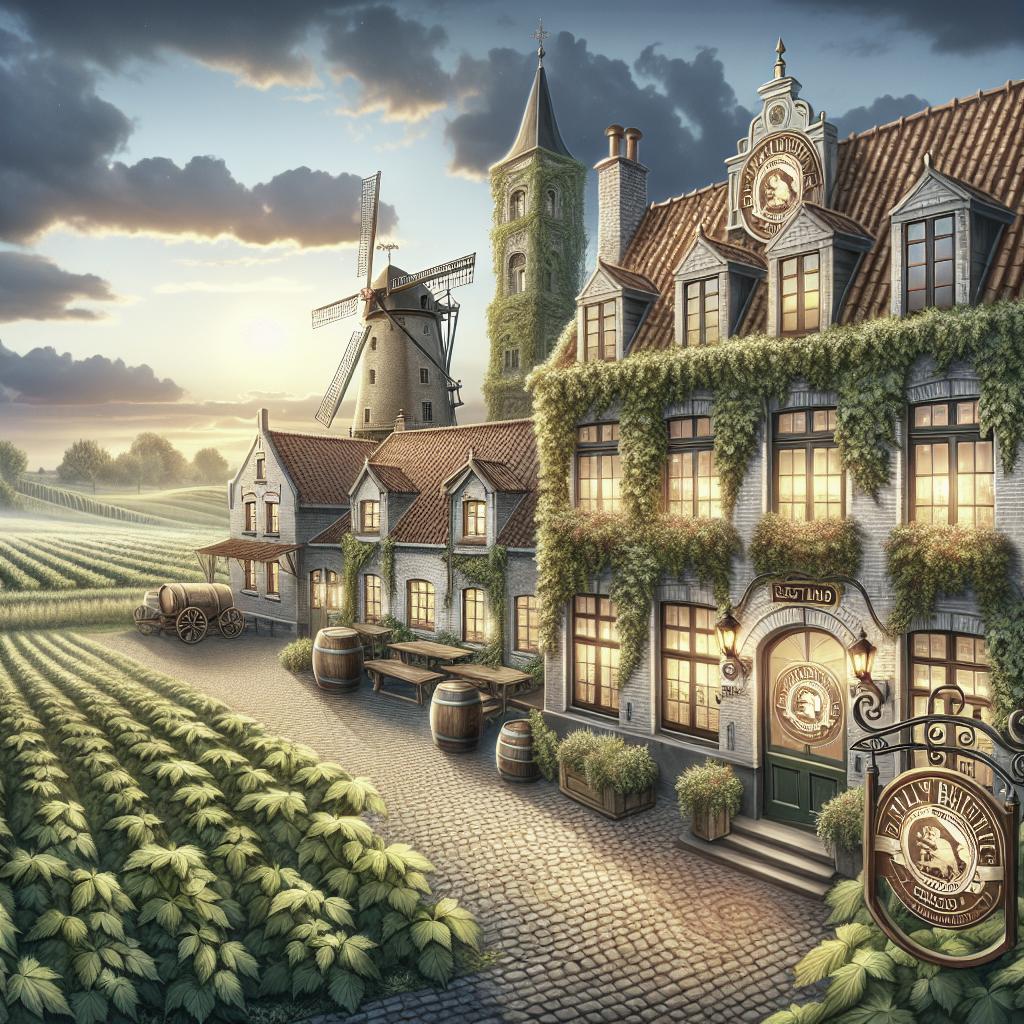“`html
The Origins of Belgian Lambic Beers
Lambic beers, steeped in rich Belgian brewing history, present a unique character derived from wild fermentation and local tradition. These age-old beers are distinct from saisons, another celebrated Belgian style, through their intricate brewing processes and eclectic taste profiles. In this article, we delve into what sets lambic apart from saison, explore the different styles of lambic such as gueuze and fruit lambics, and provide insights into the best ways to enjoy them and ideal food pairings. Whether you’re a seasoned beer connoisseur or just starting your journey into Belgian ales, understanding lambic beers offers a glimpse into an intriguing tradition that remains a cornerstone of the global craft beer movement.
What’s the Difference Between Lambic and Saison?
Belgian brewing is renowned for its diverse beer styles, with lambic and saison standing out due to their unique fermentation processes. Lambic is a distinctive style of beer that relies on spontaneous fermentation, a process where wild yeast and bacteria from the surrounding environment ferment the beer, giving it an unmistakable complexity and tartness. Typically brewed in the Pajottenland region, lambic demands patience with a lengthy barrel-aging process that can last up to three years.
In contrast, saisons, originally brewed as farmhouse ales during winter to be consumed by seasonal farmworkers in the summer, offer a more predictable brewing process using specific strains of yeast. These beers are often slightly hoppy, fruity, and effervescent. While both styles share a Belgian heritage and a commitment to artisanal brewing methods, the primary distinction lies in lambic’s wild fermentation versus saison’s controlled fermentation using cultured yeast.
Styles
Lambic
Lambic serves as the foundation for all its derivative styles. Brewed with a blend of malted barley and unmalted wheat, lambic is then exposed to the open air to capture the local microflora. Its aging process in wooden barrels helps develop complex flavors, often reminiscent of cider, wine, and sometimes even cheese, due to the wild fermentation. The result is a beer that is tart, dry, and refreshingly sour.
Traditional lambic is rarely consumed straight from the barrel, as its intense sourness and funkiness can be overwhelming for many palates. Instead, it forms the base for more refined variants, each introducing additional characteristics, but always retaining the distinctive tart profile that defines lambic.
Gueuze
Gueuze is a blend of young and old lambics, which are bottled and allowed to undergo further fermentation. This secondary fermentation creates a sparkling, champagne-like effervescence that champagne enthusiasts often appreciate. Gueuze combines the fresh, crisp notes of younger lambic with the deep, matured flavors found in older batches, resulting in a complex but balanced beer.
Lambic enthusiasts often refer to gueuze as the “champagne of beers” due to its lively carbonation and refined taste profile. With its intricate blending process, gueuze embodies the art of brewing, where brewers meticulously combine lambics of varying ages to deliver a harmonious drinking experience.
Fruit Lambic
Fruit lambics, as the name suggests, are traditional lambics that have been infused with fruit during or after the aging process. The most famous varieties are kriek, which includes cherries, and framboise, made with raspberries. These fruits introduce a sweet-tart balance that complements the sourness of the base lambic, creating a fruit-forward beer that is approachable yet complex.
The addition of fruit not only enhances the flavor profile but also the visual appeal, with the beers acquiring a range of vibrant colors corresponding to the fruits used. Fruit lambics are particularly popular among those who prefer a touch of sweetness with their sours, making them a delightful entry point for those new to lambic beers.
Fast Facts
Lambic beers are often produced in small quantities, with many breweries adhering to traditional methods that prioritize quality over quantity. Moreover, lambic is primarily brewed in Belgium’s Pajottenland region and is protected by the European Union’s Traditional Speciality Guaranteed label, underscoring its cultural significance.
Considered a living beer, lambic continues to develop and change flavors while stored in the bottle, offering a dynamic tasting experience with each sip. It is essential to serve lambic beers in the right vessel and at an appropriate temperature to fully appreciate its nuanced and complex nature.
How to Serve Lambic Beer
Serving lambic beer requires attention to detail to enhance its intricate flavors and carbonation. Generally, it’s best to serve lambic at a slightly chilled temperature, around 45-50°F (7-10°C), to emphasize its delicate aromas and flavors while maintaining a refreshing profile.
Glassware choice is also crucial; using a tulip or wine glass can help concentrate the aromatics, allowing you to fully enjoy the bouquet of the beer. Pouring slowly at an angle can preserve the natural carbonation of gueuze and fruit lambics, ensuring that every bubble contributes to the overall sensory experience.
Food Pairings
Lambic beers, with their versatility and range of flavors, can complement a wide variety of culinary experiences. The tartness and dryness of a straight lambic or gueuze pair well with rich and fatty foods, such as duck confit or creamy cheeses. These robust flavors can stand up to the beer’s acidity, creating a harmonious balance.
Fruit lambics, with their sweeter and fruitier notes, are excellently paired with desserts like chocolate torte or crème brûlée. They can also serve as a delightful contrast when matched with spicy dishes, where the fruitiness tempers the heat while the sourness acts as a palate cleanser.
Best Brands
Several renowned breweries have made significant contributions to the world of lambic beers. Cantillon, a namesake in lambic production, is highly regarded for its adherence to traditional brewing practices, producing classics like Cantillon Gueuze and Cantillon Kriek.
Another celebrated brand is Boon, offering a range of lambics known for their balance and drinkability. The Boon Oude Geuze, in particular, is noted for its elegant blend of old and young lambics that deliver consistency and satisfaction in every bottle. Other notable names include Lindemans, known for accessible fruit lambics, and 3 Fonteinen, which offers a deeper dive into the lambic universe with its bold and intense creations.
Lessons Learned
| Topic | Key Points |
|---|---|
| Difference Between Lambic and Saison | Spontaneous vs. controlled fermentation; regional influences |
| Styles: Lambic | Base beer; wild fermentation; complex, tart flavors |
| Styles: Gueuze | Blended lambics; secondary fermentation; champagne-like |
| Styles: Fruit Lambic | Fruit-infused; sweet-tart balance; vibrant colors |
| Fast Facts | Small production; TSG protection; evolves over time |
| How to Serve | Chilled temperature; tulip/wine glass; slow pour |
| Food Pairings | Rich foods for lambic/gueuze; desserts/spicy for fruit lambic |
| Best Brands | Cantillon, Boon, Lindemans, 3 Fonteinen |
“`


